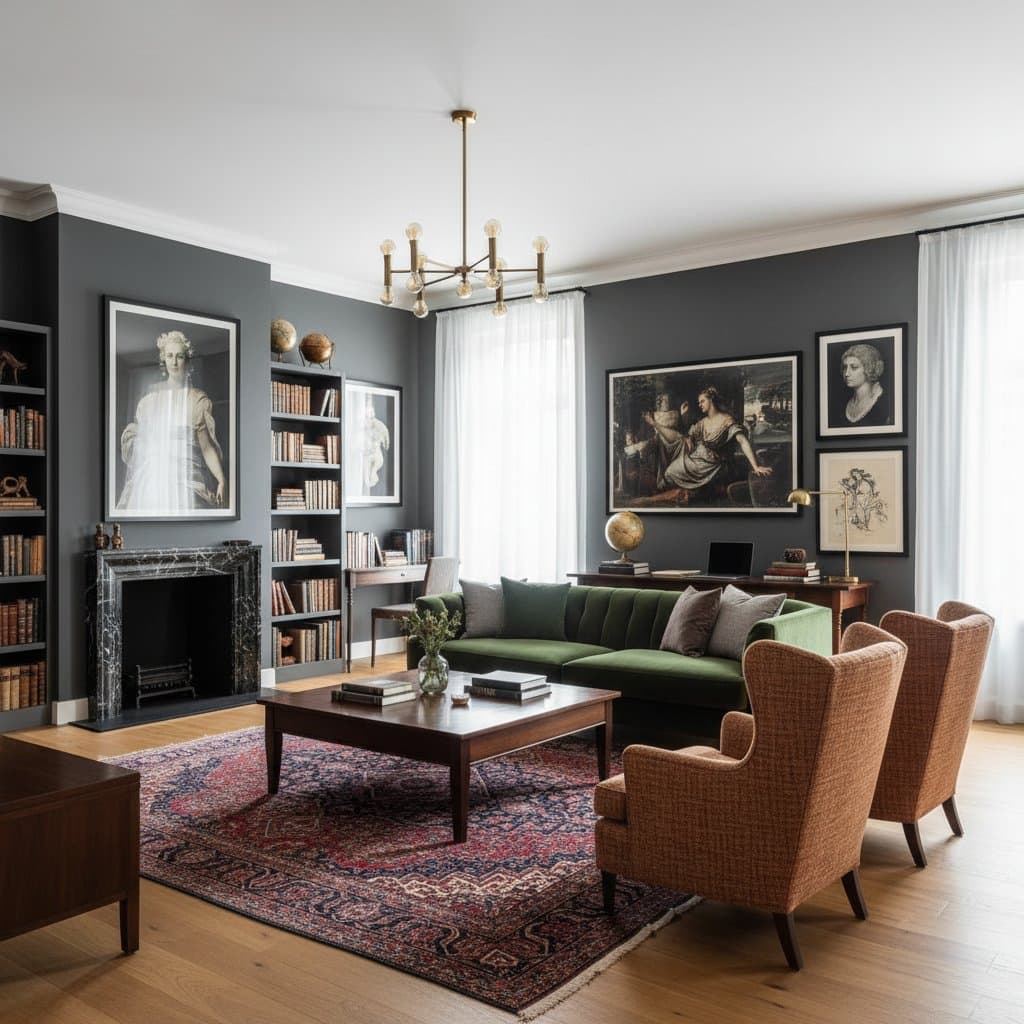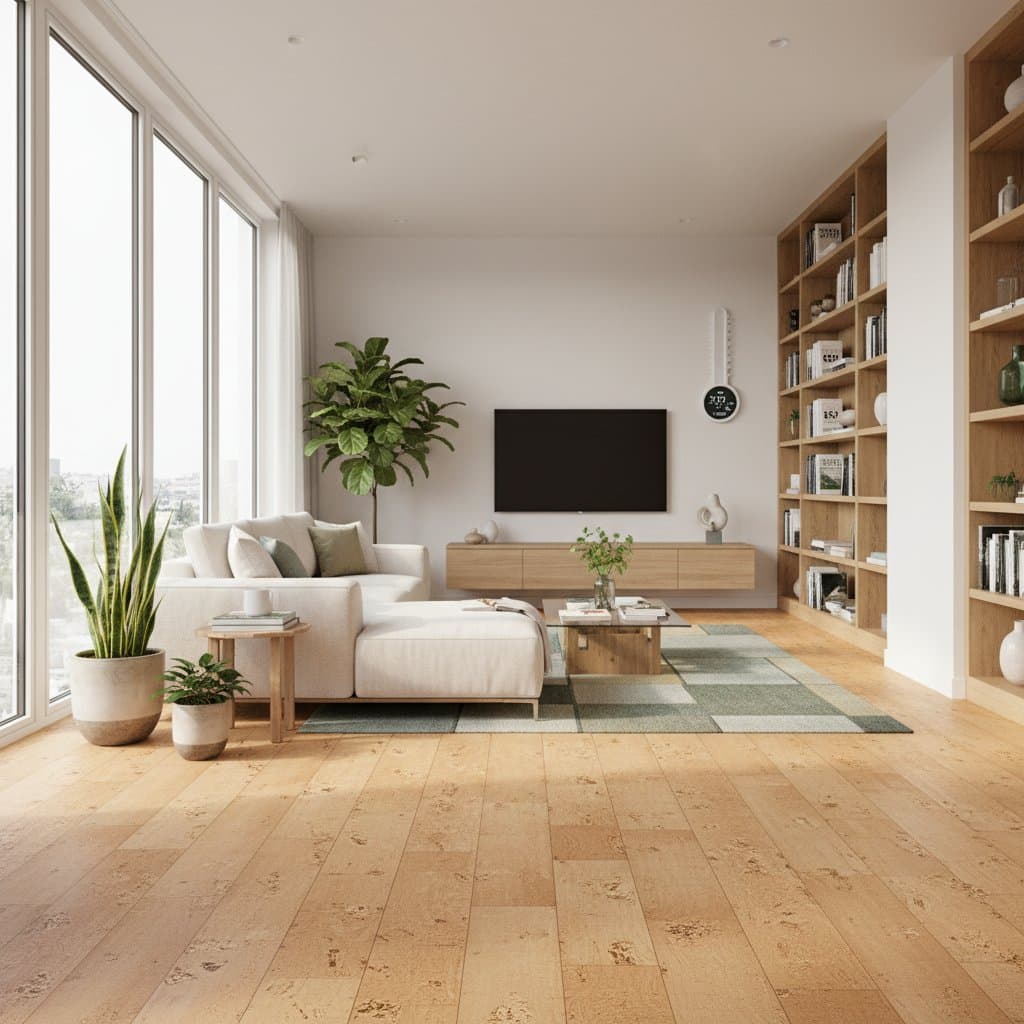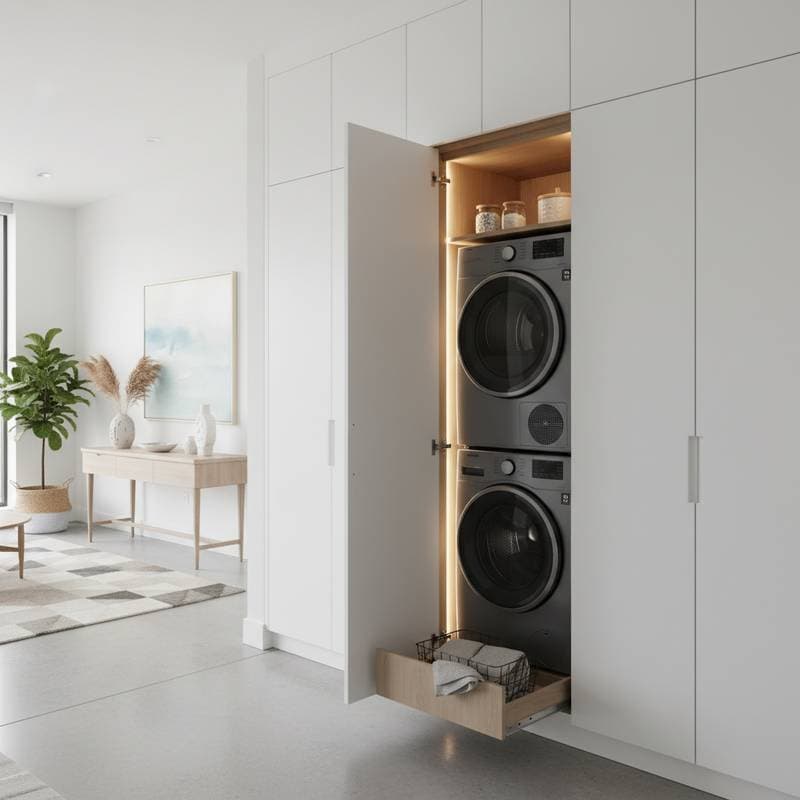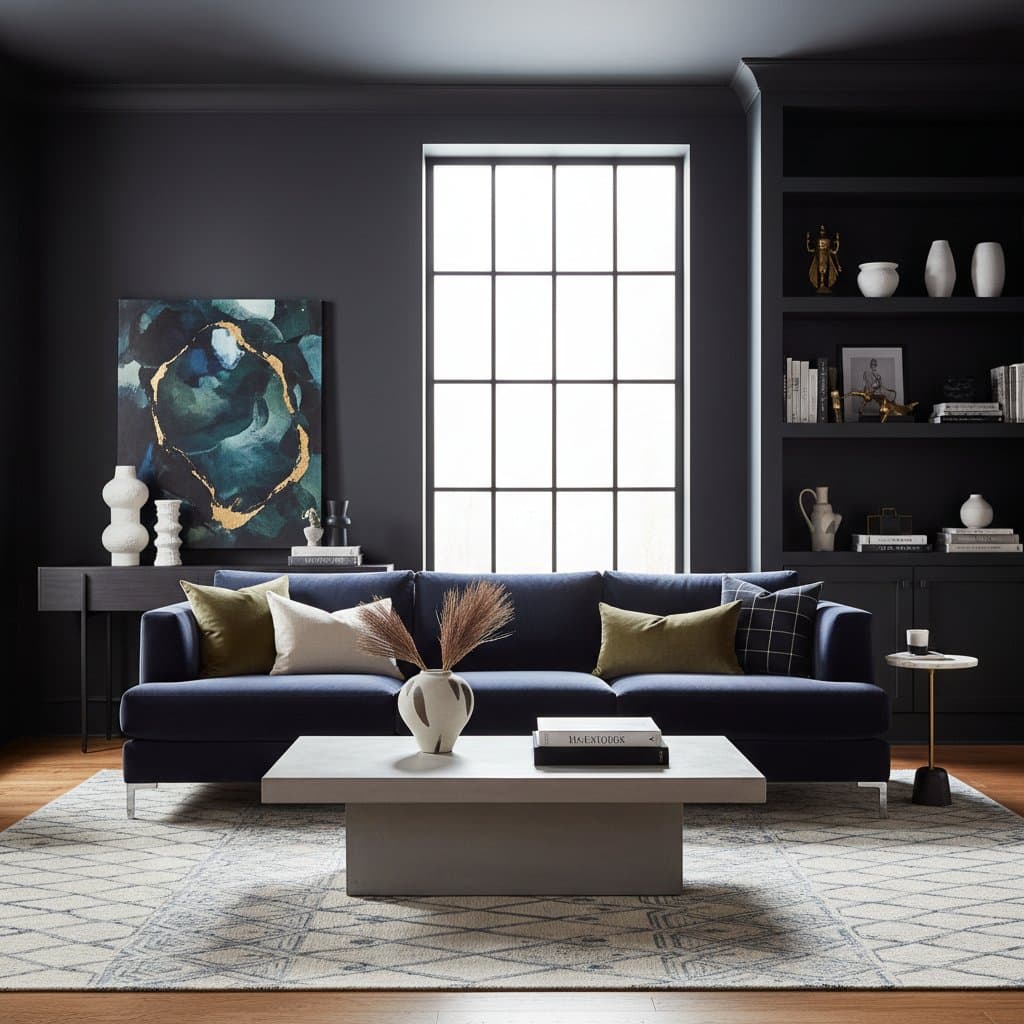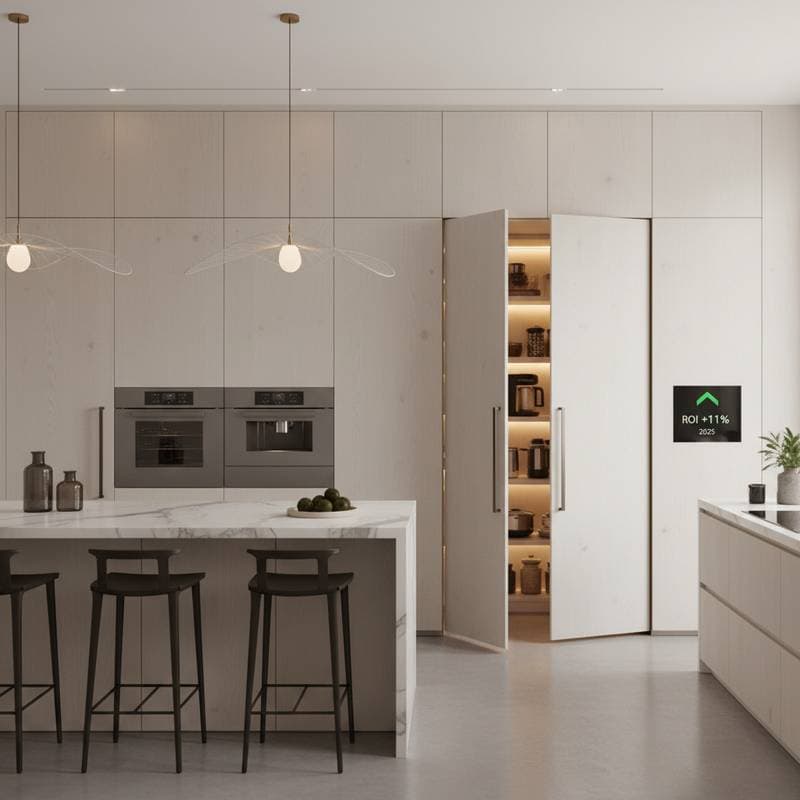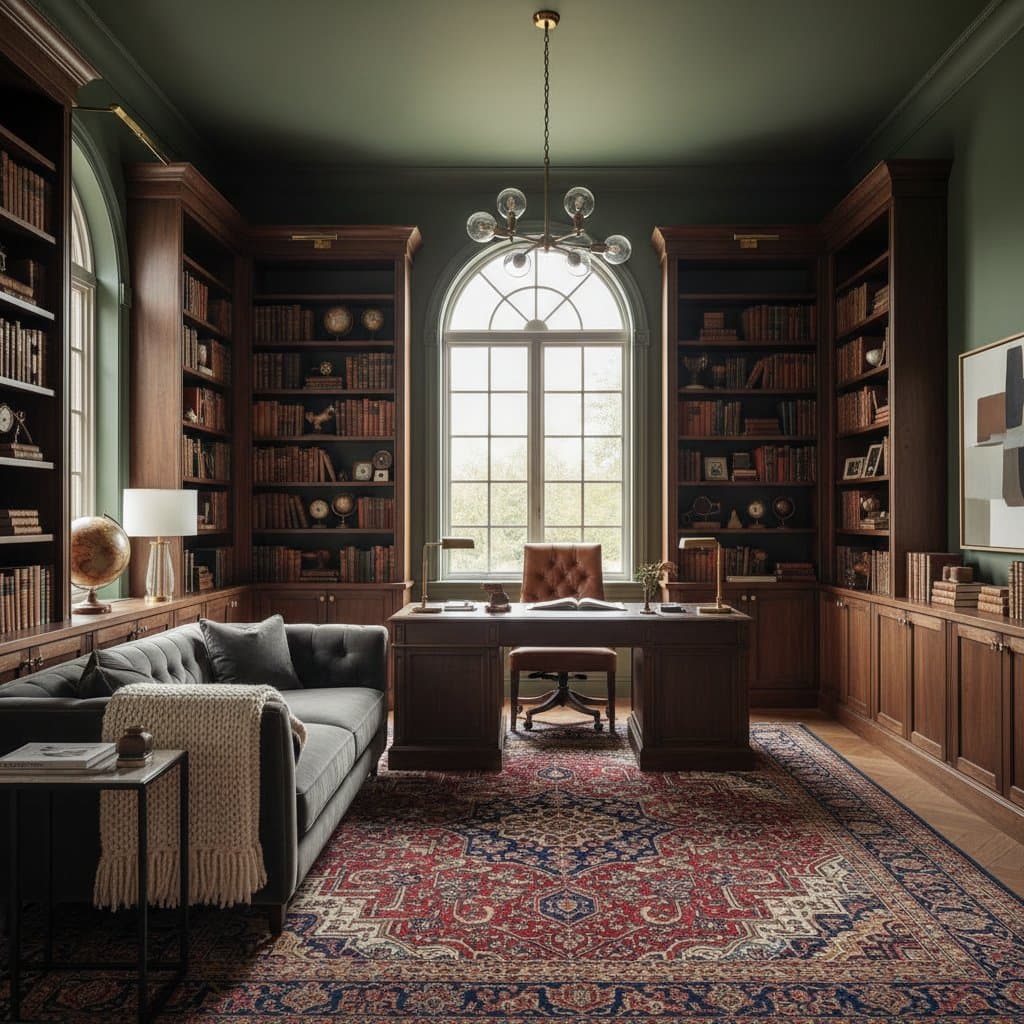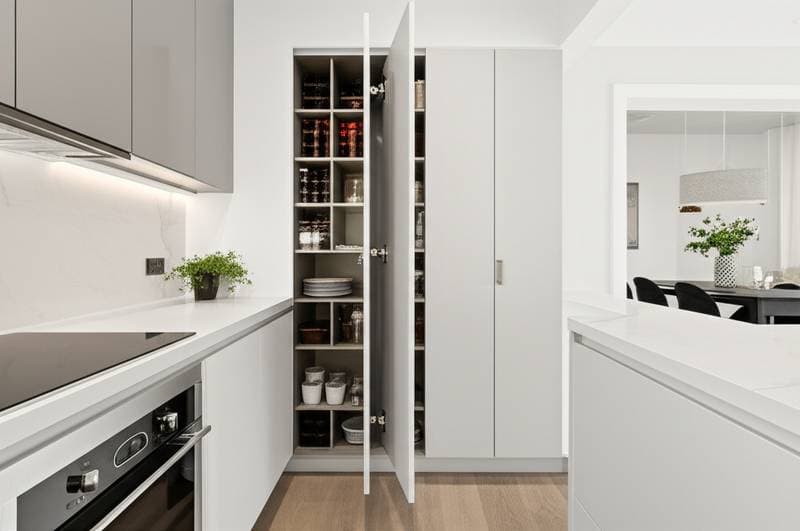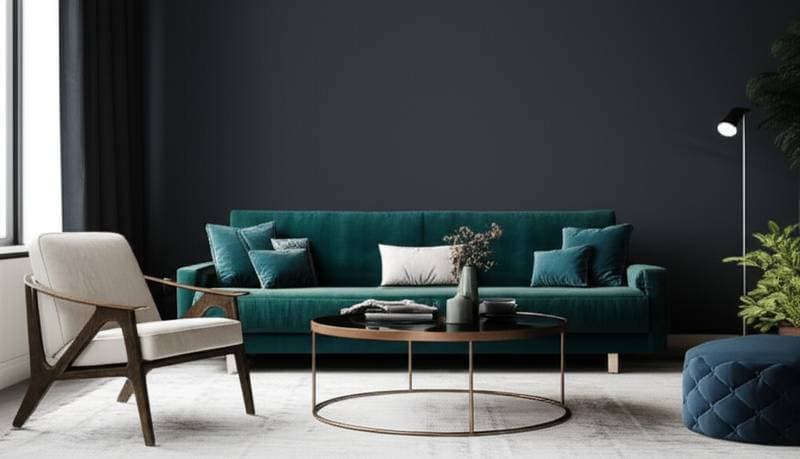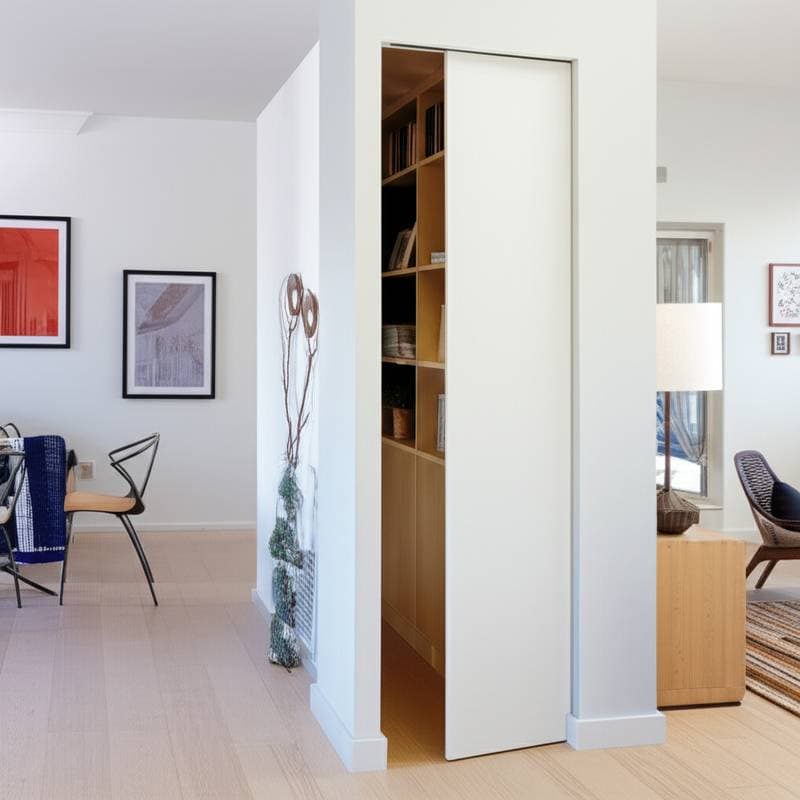Dark Academia Boosts Home Resale Speed by 15 Percent
Dark Academia design has transitioned from university libraries to contemporary living spaces. Homeowners who incorporate this moody, scholarly aesthetic report accelerated sales. Real estate professionals observe that properties featuring Dark Academia interiors sell approximately 15 percent faster than comparable listings with minimalist or all-white designs. This style imparts a layer of warmth and sophistication often absent in stark modern environments.
This guide examines the implications of Dark Academia for property resale, including associated costs, implementation strategies, and suitability assessments for specific spaces and markets.
Cost Snapshot
The national average cost for a complete Dark Academia interior in a medium-sized home ranges from $8,000 to $25,000. A mid-range update targeting the living room, dining room, and study typically falls between $12,000 and $18,000. For a budget-conscious refresh, allocate $1,500 to $3,000 toward paint, lighting fixtures, and secondhand decor items.
What Drives Cost
- Material choice: Selections such as solid wood, marble surfaces, and brass hardware increase expenses.
- Furniture quality: Authentic vintage or antique items command higher prices than replicas.
- Lighting layers: Incorporating wall sconces, table lamps, and chandeliers involves electrical wiring and fixture installation fees.
- Custom millwork: Features like built-in shelving or wainscoting can elevate labor costs by up to double.
- Professional design: Engaging an interior designer contributes an additional 10 to 20 percent to the overall budget.
Options and Types
Dark Academia interiors encompass a spectrum from traditional to contemporary expressions. Principal variations include the following:
- Classic Academic: Characterized by deep mahogany tones, velvet drapery, oil paintings, and antique rugs. This suits historic properties or formal areas.
- Modern Academic: Defined by sleek profiles, dark neutral palettes, metallic accents, and abstract artwork. It adapts well to open-concept layouts in recent constructions.
- Rustic Academic: Incorporates weathered wood, stone elements, and ambient candle glow. This variant complements cottage or farmhouse architectures.
- Gothic Academic: Features arched motifs, patterned dark wallpaper, and elaborate furnishings. It excels in creating dramatic focal points within dining or library spaces.
- Minimal Academic: Employs simplified furniture, subdued dark hues, and sparse accessories. This approach fits compact apartments or dedicated home offices.
Step-By-Step Basics
- Plan the palette. Select two or three foundational dark shades alongside one or two complementary neutrals to establish cohesion.
- Prep the room. Repair wall imperfections, thoroughly clean all surfaces, and apply painter's tape for precise edges.
- Paint walls. Apply a matte or eggshell finish in shades such as deep green, navy blue, or charcoal gray to set the mood.
- Layer lighting. Integrate table lamps, wall-mounted sconces, and ceiling fixtures equipped with warm-toned bulbs for balanced illumination.
- Add texture. Introduce substantial curtains, woolen throws, and overlapping rugs to enhance visual and tactile depth.
- Install wood or panel accents. Incorporate crown molding or freestanding shelves to evoke a scholarly ambiance.
- Furnish with character. Opt for pieces in leather upholstery, velvet fabrics, or darkly finished wood to anchor the space.
- Display books and art. Arrange stacks of classic hardbound volumes, mount framed illustrations, and integrate meaningful personal artifacts.
- Clean and style. Remove any dust, fine-tune light directions, and arrange elements to foster an welcoming atmosphere.
Alternatives
- Scandinavian Minimalism: Emphasizes light tones, uncomplicated forms, and easy upkeep. It attracts broad appeal yet misses the introspective richness of Dark Academia.
- Industrial Loft: Relies on raw brick exposures and metallic components. This draws interest from younger demographics but risks appearing austere.
- Midcentury Modern: Presents geometric simplicity paired with natural woods. It accommodates confined areas more readily, though it conveys less intensity.
- Traditional Luxury: Incorporates detailed embellishments and diffused illumination without dominant dark elements. This remains a reliable choice in traditional markets.
ROI and Resale
Properties enhanced with Dark Academia styling demonstrate quicker turnover and incremental value appreciation. Professionally staged homes in this vein frequently secure competing bids shortly after market entry. The elevated perception of material quality and spatial ambiance encourages purchasers to extend their offers.
Projected return on investment includes the following:
- Full room redesign: 60 to 80 percent recovery.
- Cosmetic refresh: 100 to 150 percent return, particularly when executed prior to listing.
- Whole home staging: Up to 15 percent reduction in selling time and 3 to 5 percent premium on final price.
These projections presuppose effective lighting balance, pristine maintenance, and restrained accessorizing. Excessively dim environments or disorganized displays may diminish attractiveness.
FAQ
How do I keep a Dark Academia room from feeling too dark?
Incorporate multiple lighting sources and glossy surfaces for light reflection. Position mirrors to capture natural window light, blend warm metallic finishes, and select bulbs with a warm white glow.
What colors define this style?
Core hues consist of deep greens, navy blues, oxblood reds, and charcoal grays. Neutral accents in cream, tan, or soft gold provide balance.
Can I use this style in a small apartment?
Yes, though restrict dark wall applications to one or two surfaces and pair with pale textiles. Minimize visual clutter and amplify illumination to maintain openness.
Does it require antique furniture?
No. Contemporary items with vintage motifs suffice. The emphasis lies on cultivating atmosphere rather than historical authenticity.
Will this trend last?
Yes. Rooted in enduring design tenets and psychological appeal, it sustains relevance amid shifting fashions.
Implementing Dark Academia for Resale Success
If current staging yields prolonged market time or lacks distinction, consider a targeted Dark Academia update. Initiate with economical changes like repainting, upgrading fixtures, and sourcing decor before advancing to structural elements such as paneling. Evaluate color samples under both daytime and artificial conditions to confirm harmony.
Prioritize high-traffic zones where initial viewer connections occur. A thoughtfully darkened living area or office can foster emotional resonance. Employ precise lighting to accentuate artwork, literature collections, and material variances while preserving tidiness and subtle personalization.
Executed effectively, Dark Academia conveys narrative and solace alongside functionality. It prompts prospective owners to envision enduring narratives within the home. To optimize outcomes, curate a unified color scheme, consult specialists for intricate installations, and obtain multiple contractor estimates prior to commencement.

